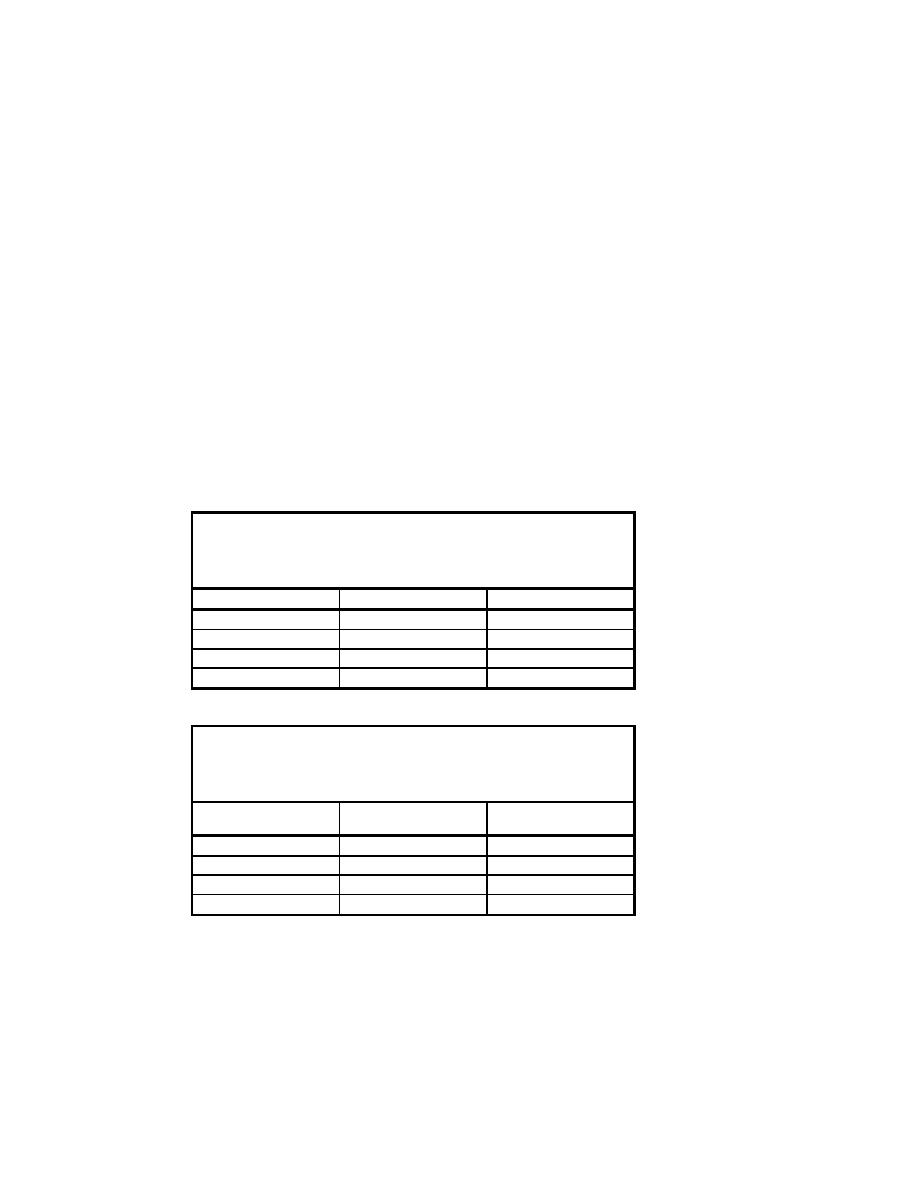
The C&K experiments were conducted in a 30-m-long flume with a
constant water depth of 0.5 m. Waves were generated at one end of the
flume, and a current flowing against the waves was introduced at the other
end. A varying cross-shore current was obtained by placing a false wall in
the flume that linearly reduced the cross-sectional area and the experiments
were designed to produce blocking in the narrowest section. The mean
current varied from 0.53 m/s in the narrowest part of the flume to 0.32 m/s in
the widest section. The wave periods (constant and peak spectral) employed
were in the range 1.2-1.6 s, and both monochromatic and random waves were
used. The wave height was measured along the flume with 29 gauges for the
monochromatic tests and 36 gauges for the random wave tests (Chawla and
Kirby 1999).
Eighteen tests were carried out using monochromatic waves and 20 tests
using random waves. For evaluating the performance of NMLong-CW, four
monochromatic and four random tests were selected, representing different
aspects of the experiments (e.g., blocking of the waves before breaking,
breaking followed by blocking, and breaking without any blocking).
Tables 2 and 3 summarize the experimental conditions for the
monochromatic and random tests, respectively, in the evaluation of NMLong-
CW. The notation "M" (monochromatic) and "R" (random) was introduced
to separate between the two types of tests (the numbering follows C&K).
Table 2
Wave Conditions for Selected Monochromatic Tests
from Chawla and Kirby (1999) Experiments Used in
NMLong-CW Simulations
Test
Wave Height (m)
Wave Period (s)
M3
0.033
1.2
M4
0.066
1.2
M11
0.104
1.3
M18
0.141
1.4
Table 3
Wave Conditions for Selected Random Tests from
Chawla and Kirby (1999) Experiments Used in
NMLong CW Simulation
Root-Mean-Square
Peak Spectral Wave
Test
Wave Height (m)
Period (s)
R2
0.033
1.1
R14
0.045
1.2
R15
0.058
1.3
R19
0.052
1.4
In the model simulations, no additional calibration was performed, and
the same coefficient values were maintained as for the CHL-I simulations
(standard values). One notable aspect involved in reproducing the C&K
measurements was to explore the limits of applicability for NMLong-CW and
investigate how the model would perform under such circumstances in terms
of stability, robustness, and agreement with measurements. The C&K
experiments were carried out mainly in deep water, whereas NMLong-CW
would typically not be employed for these conditions. Also, as previously
30
Chapter 4 Verification of Wave Model



 Previous Page
Previous Page
